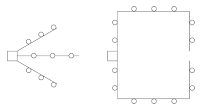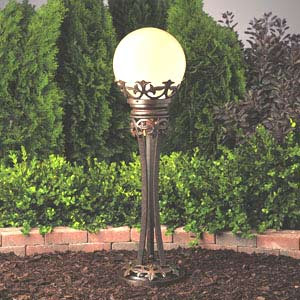Hidden in Plain View

Whether you’re building a new home or renovating an old home,
lighting is a key element in both the function and style of the space.
Here are some basic tips in what to look for when considering installing recessed lighting.
Why You May Want Recessed Lighting
Recessed lighting offers a clean, streamlined look in a home. It can increase the amount of light in a room, highlight artwork or other special features, and open up spaces so they look and feel bigger.
When to Use Recessed Lighting
Though recessed fixtures are most easily installed between ceiling joists of new building or major remodeling projects, some recessed fixtures are designed specifically for retrofit applications and can slip into an existing ceiling space through holes made to accommodate wiring; however, the fixtures you choose must be rated for use near insulation (IC housing rated) whenever ceiling insulation is present.
When a ceiling is uninsulated, a non-IC housing may be used.
Where to Place Recessed Fixtures
Avoid recessed fixtures placed too close together or in rows down the center of the room. This type of installation can have the look of an airport runway.
Match the size of your fixtures to how close together they can be installed. The common rule is that 4-inch fixtures should generally be placed at least 4 feet apart and 6-inch fixtures about 6 feet apart.
Center recessed fixtures in front of the objects you wish to light – a painting, bookshelf, or drapery panels, for example – and about 12 to 18 inches in front of that object.
Recessed lights used for reading or task lighting should be carefully placed overhead so your head and shoulders will not block needed light.
When lighting a three-dimensional object such as a fireplace, sculpture, or flower arrangement, it is more effective to light it from two or three different angles.
Use wall-washing fixtures around the perimeter of a small room to help “push” the walls out and make the space feel larger, or aim them at a collection of artwork or photographs to call attention to the display.
Sizing Recessed Light Fixtures
Whether you choose fixtures with standard line voltage, low voltage halogen, or fluorescent fixtures, the basic sizes are 4-, 5-, or 6-inches in diameter. The 6-inch fixtures can be used in tall entryways or two-story hallways, while the smaller 4-inch sizes work better in smaller spaces since they have a sleeker, contemporary look with minimal intrusion.
Extras
Adjustable eyeball fixtures can be aimed at artwork as accent lighting.
Cover the walls with light by selecting wall washer fixtures.
Choose reflectors when you want the most light from a fixture, or install white or black baffle trims to focus and direct light or reduce glare.
Types of Light Bulbs for Recessed Lighting
When selecting or installing recessed lighting, several types of fixtures and bulbs are available for specific needs.
- Incandescent, also known as “A” bulbs, are inexpensive and good for general light or wall washing with the use of reflectors.
- “R” bulbs are most common and have a reflective surface included on the back of the bulb.
- Halogen bulbs offer a clean white light, and are available in both flood and spot types in sizes to fit 4-, 5-, or 6-inch fixtures.
- Low voltage halogen bulbs have a long life and put out more light than incandescent bulbs, but require the use of transformers and special low voltage housings.
When to Skip It
Ceilings of concrete or with ornate plasterwork or delicate molding details are not good candidates for recessed lighting. In these spaces, choose a chandelier (if there is an electrical box in the ceiling), wall sconces, or table lamps instead.
Cautions
Know your home and its construction before purchasing any lighting components, since each installation will be unique. Get advice from an experienced electrical salesperson on what parts are needed for your space – including special wiring, transformers, bulbs, or IC-rated housings. In some local areas you’re required to obtain building permits to upgrade or install recessed lighting. If the project is too advanced for your skills, have your new lights installed by a qualified electrician.
By Carol Naifie "Your Guide to Interior Decorating"



 Whether you’re building a new home or renovating an old home, lighting is a key element in both the function and style of the space.
Whether you’re building a new home or renovating an old home, lighting is a key element in both the function and style of the space. 




























